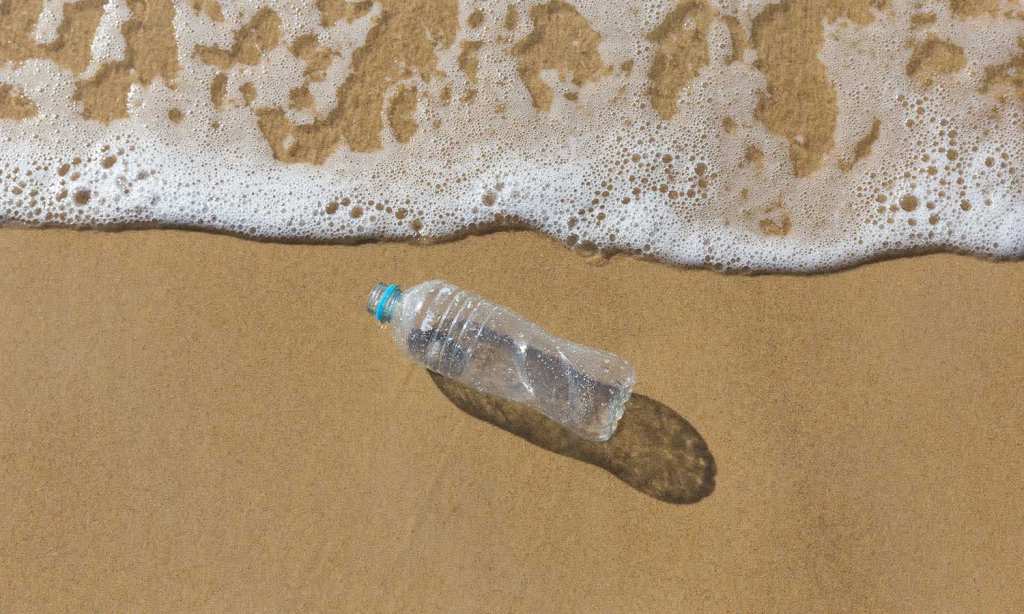The Latch has partnered with Suncorp Bank to deliver the sustainability content you need, like how to recycle properly and how to get your kids involved in the process.
Even though 89% of Aussies know the importance of recycling, we sometimes fall into wish-cycling — where we toss things into the bin and just hope it will find its way to be recycled. Knowing what can (and can’t) be put in the recycling bin is confusing and the different symbols and numbers on the packaging don’t help.
There are two broad categories of symbols that are commonly found on packaging in Australia, designed to help us with the recycling process: plastic identification codes and the Australasian Recycling Label (ARL). To clear up any confusion and help you recycle better, we’ll walk you through the meaning of the shapes and digits commonly found across packaging in Australia, ahead.
ARL Symbols
ARL symbols can be found on the bottom or side of many food packaging labels, with bold black and white text that tells you exactly which bin to place each component of your packaging in.
 All Can Go
All Can Go
The coloured recycling symbol indicates that all parts of this product can be recycled in your kerbside bin.
Check Before You Chuck
The transparent recycling triangle means the item can be recycled if treated as indicated on the packaging before doing so. For example, this could be a milk carton that should be rinsed and dried before it’s folded and put in the bin.
 No Recycling Needed
No Recycling Needed
The rubbish bin symbol indicates that this packaging must go straight into the trash bin because the materials in the packaging are not suitable for recycling.
Plastic Identification Codes
The second category of recycling labelling in Australia is plastic identification codes, which are the symbols with the triangle arrow symbol and a number from one to seven — usually found on the bottom of the packaging.
Related: Is It Possible to Carbon Offset Your Flights?
Related: How to Speak to Your Kids About Climate Action (Without Scaring Them)
The number and sometimes letters you see on packaging refer to the Plastic Identification Code created in 1988 by the Society of the Plastics Industry in the US and was introduced to Australia in 1990. The number is important to the plastic industry as it identifies the manufacturing components of plastic but does not indicate its recycling capabilities.
As a general rule of thumb, though, plastics with codes one, two or five are the easiest to recycle in your kerbside bins.

1 – PET or Polyethylene Terephthalate
Polyethylene Terephthalate (PET) is the most common type of plastic used. It is transparent, long-lasting and able to hold many kinds of liquids without reacting to them. It is often used for bottled water, soft drinks and laundry liquids, and can be recycled into other bottles and polyester fibres.
2 – HDPE or High-Density Polyethylene
High-Density Polyethylene (HDPE) is the other most common type of plastic used to make soft or hard products due to its ability to tolerate high temperatures and strong chemicals. It is usually white or coloured and used for cleaning products, disinfectants, and personal hygiene products like soaps, facial soap and shampoo.
3 – PVC or Polyvinyl Chloride
Polyvinyl Chloride (PVC) is a plastic that’s commonly used in plumbing and construction. This plastic is used across electronic and health care industries, as well as and in everyday products like cling wrap, bubble wrap, toys and affordable furniture. It’s difficult to recycle and is said to contain bisphenol A (BPA), which is a hotly contested chemical.
4 – LDPE or Low-Density Polyethylene
Low-Density Polyethylene (LDPE) is a soft, flexible and easy-to-use plastic for wrapping and covering items. It’s found in bread, vegetable and fruit bags, and bin liners. This specific type of plastic can’t be put directly into recycling bins but private programs like REDcycle help you dispose of them properly. You can find out drop-off points all over Australia here.
5 – PP or Polypropylene
Polypropylene (PP) is a hard but flexible plastic commonly used to make moulds in the automotive industry and in common household packaging items like yoghurt tubs. It can be recycled in your kerbside bin.
6 – PS or Polystyrene
Polystyrene (PS), also known as styrofoam, is commonly used for takeaway packagings like cups and food containers. This type of plastic is light but bulky and challenging to recycle.
7 – Other
The number seven indicates that this product has a mix of the plastic types mentioned above and it is not suitable for recycling.
When in doubt, you can also use the Packaging Recyclability Evaluation Portal (PREP), which is a free online platform that helps you verify whether your packaging is or isn’t recyclable in Australia and New Zealand kerbside collections.
Read more stories from The Latch and subscribe to our email newsletter.








